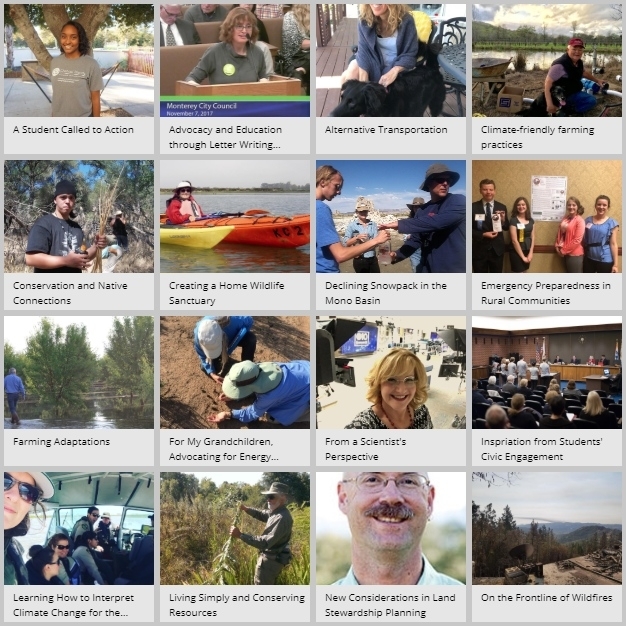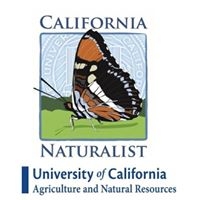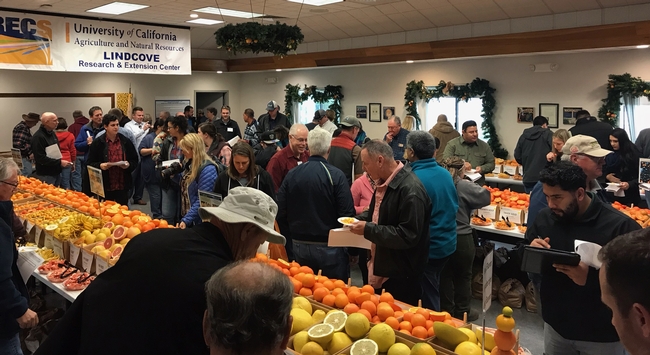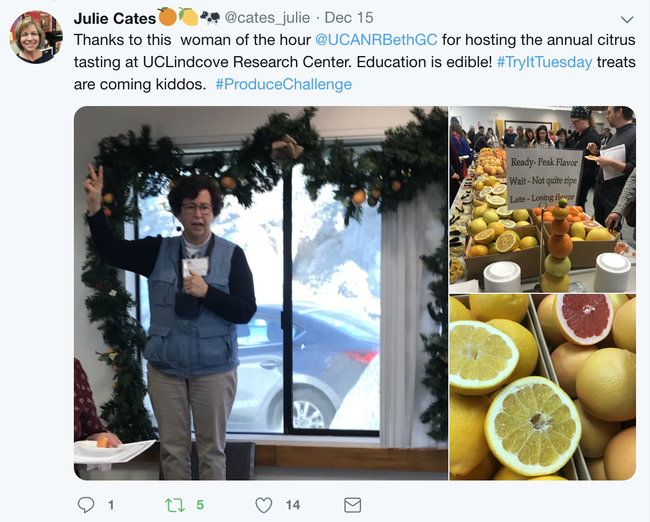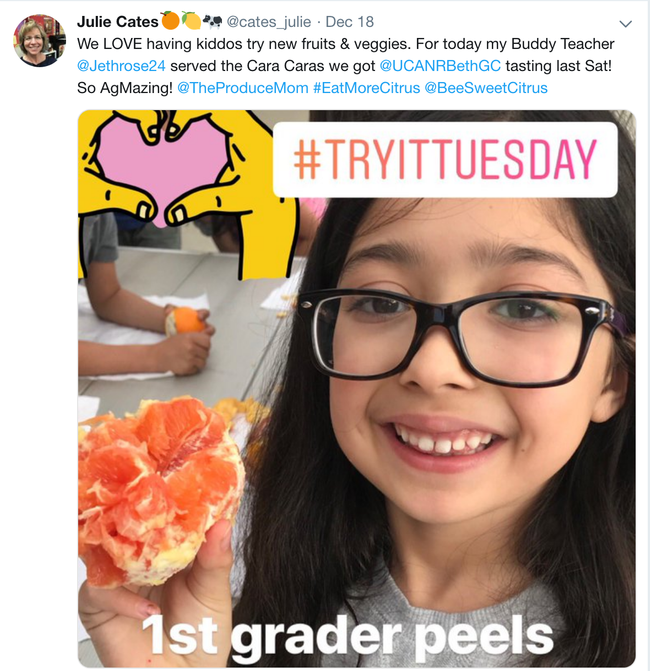Posts Tagged: December 2018
Apply to develop online educational resources for underserved audiences
All UC ANR and UC ANR-affiliated academics and staff are invited to apply for funding to develop online resources targeting underserved audiences.
Extending UC ANR's reach and impact to significant numbers of non-English speaking audiences in California is key to achieving our vision of effecting positive change in important areas or issue(s). Reaching audiences through on-demand, online resources is one part of the strategy.
Funding is available to develop educational materials in languages other than English and make them accessible through the UC ANR website. Please consider development of a range of material forms including, but not limited to, courses, video, or other media.
All products must be branded UC ANR and hosted on the UC ANR website with linkages to other sites and resources.
Proposals of up to $25,000 will be considered. Multiple awards will be made. Please note that equipment purchases may not be included in budget requests.
Proposal submission process
To begin the submission process, log into the ANR portal. Go to “open systems” on the right menu and click on the link to “Develop Online Educational Resources Targeted at Underserved Audiences.”
Proposals must be received by 5 p.m. Pacific time on Jan. 28, 2019.
Strategic Initiative Leaders and the Strategic Initiative Panels will evaluate proposals. If additional expertise is needed, ad-hoc reviewers may be solicited. The following criteria will be used to determine funding decisions.
Proposal Criteria
Format. Proposals will be no more than 3 pages in length, minimum font size is 10-point and the minimum margin is 0.75 inches.
Proposals must include the following:
• Justification. What is the issue or important area addressed and who is the intended audience?
• Output. Give a brief description of the product to be developed and the method used to develop the product (e.g., will you include contracted services?). How will you ensure products are culturally relevant and applicable? Show how products will be delivered through UC ANR and how appropriate UC ANR branding will be assured?
• Expected Reach and Impact. What is the extent of the proposed reach and what behavior change(s) are expected? Which UC ANR Public Value Statements and Condition Changes will be positively impacted? How will some form of impact be assessed?
• Audience Access and Promotion. Clearly articulate the plan to promote the product so that it will be discoverable and adopted? What is the evidence that the targeted audience will access the product through the targeted medium?
• Team Capacity. Is there strong evidence that the PI and team can develop the intended product, on time and in budget? Is the appropriate expertise available within the team or as a contracted service?
• Budget. Is there clear need for the requested budget? Does a contractor (internal or external to UC ANR) provide estimates for any contracted services? Note: equipment purchases are not allowed in budget requests. You may submit your budget as a separate document if necessary.
Eligibility
All UC ANR and UC ANR-affiliated academics and staff are eligible to apply for funding.
Timeline
• Submissions due by Jan. 28, 2019, 5 p.m. Pacific time
• Successful applicants notified by Feb. 22, 2019
• Products completed and funds expended by Jan. 10, 2020
• Final reports (1 page) due by Feb. 28, 2020
Note on the funding source: The funds for this initiative come from those budgeted to further the impact of our Strategic Plan goals.
If you have questions about the application process, contact Jennifer Caron-Sale at (510) 987-0214 or Jennifer.Caron-Sale@ucop.edu.
California Adaptation Clearinghouse website launched
IGIS and the California Naturalist Program are pleased to help celebrate the launch of a new information portal on climate adaptation. The California Adaptation Clearinghouse was officially launched at the California Adaptation Forum in August in Sacramento. The site was developed by the Governor's Office of Planning and Research (OPR) in collaboration with the UC Berkeley Geospatial Innovation Facility, CalNat and IGIS.
The Clearinghouse is a database-driven platform with a wealth of curated resources for climate adaptation. The site originated out of Senate Bill 246, which mandates OPR to provide resources on climate adaptation for local governments, regional planning agencies, and other practitioners working on adaptation and resilience. The database also contains sea-level rise resources collected by the Ocean Protection Council under Assembly Bill 2516. It's an amazing resource for anyone looking to strengthen climate change preparedness in their local government, community, or business.
The database includes numerous planning resources that have been developed and vetted by experts in the field. For example, the Urban Sustainability Directors Network has a how-to guide for local governments on developing equitable, community-driven climate preparedness plans, which you can find in the Clearinghouse. There are also examples of vulnerability assessments, local plans, and funding strategies. The majority of resources are hosted by other organizations, but unlike a Google search all the resources in the Clearinghouse have been reviewed, annotated, and cataloged by subject matter specialists.
To help find resources, the Clearinghouse has a number of search options, including more than a dozen topic categories adapted from Safeguarding California, the state's overall roadmap for building climate change resiliency. You can also search by Type of Impact (e.g., drought, sea level rise), Resource Type (e.g., case study, assessment, policy guidance), and of course an interactive map. Each resource has a descriptive blurb so you can quickly find what you need.
Adaptation planning can be information intensive, so the Tools and Data section of the website is devoted to helping people find data and crunch the numbers. Interested in rangelands? Check out the CA Landscape Conservation Cooperative's compiled Threat Assessments to California Rangelands. Sea level rise? Perhaps the CosMos modeling tool from USGS, or the Surging Seas tool from Climate Central. Like all resources, each tool and dataset has a user-friendly description, a technical summary, a bit about the data, and links to the source. One of our favorites is the California Energy Commission's Cal-Adapt, which includes both historical and projected climate data downscaled for California.
Providing a more personal perspective, the Clearinghouse also contains stories about climate adaptation from individuals, community groups, and businesses. The stories were collected by the UC ANR California Naturalist Program and their vast network of certified naturalists. The climate stories are diverse and compelling, from a concerned grandmother who becomes engaged in a community choice energy program, to a solar project engineer working to strengthen measures to prevent heat stroke in field staff. An interactive Story Map developed by IGIS helps users find stories from their area, some of which even have audio or video clips so you can hear the story in the speaker's own words.
Climate adaptation is complicated, but information portals like the Clearinghouse allow anyone to tap into the incredible amount of work that has already been done in California and elsewhere. Rather than reinvent the wheel, local agencies can build upon vetted guidelines from similar areas. We are all fortunate that the State of California has invested in a platform to share curated resources for the long-term, because climate adaptation is already part of the new normal. More resources are in the pipeline, so check it out and then check back often to see what's new.
CalNat accomplishments recognized in five-year review
The UC California Naturalist program successfully completed its first UC ANR five-year statewide program review. Associate Vice President Powers and I extend a thank you to the ad-hoc committee for their time commitment and thoroughness in examining the program and providing recommendations to UC ANR's Program Council. The time Adina Merenlender, California Naturalist director, and Greg Ira, program coordinator, spent providing detailed information on all aspects of the program is also greatly appreciated. Last, but not least, a big thank you to all the UC California Naturalists, instructors and partners who submitted feedback during the review.
We recognize the program's accomplishments in their first five years – development of a new education and service program, creation of a network of more than 47 statewide partner institutions, and training over 2,600 Certified California Naturalists who have contributed over 140,000 hours of volunteer service (as of June 2018) – promoting the stewardship of California's natural resources.
To guide the program into the future, below is a summary of the direction and next steps for the California Naturalist Program:
1. Until recommendations in #2 below are addressed, roll out Climate Stewards as a continuing education opportunity within the UC California Naturalist program.
2. Revisit the current models that are being used to deliver the California Naturalist curriculum to consider an expansion in on-line instruction, post-course community engagement, and new UC ANR tools for program evaluation.
3. Continue efforts in equity, diversity and inclusion to increase the program's reach to new and underserved clientele; and focus the next needs assessment on the course participants since the first assessment was focused on partner organizations and instructors.
4. Develop a method to systematically collect success stories that are aligned with the UC ANR public value statements and metrics to illustrate contribution to UC ANR condition changes.
5. Add members to the Program Advisory Council who are external to UC ANR.
I look forward to working with the California Naturalist Program as it pursues these and other opportunities that may arise. In particular, I hope to explore how to incorporate more community and citizen science activities and expand collaboration with other UC ANR programs. Best wishes for the ongoing success and growth of the California Naturalist Program!
Glenda Humiston
Vice President
Duo adds layer of security to online accounts
As many of you are aware, preparations are underway for UC ANR to implement UCPath in the spring of 2019. UCPath is a systemwide initiative launched by the University of California to modernize its current payroll system. Using new technology, UCPath will standardize the Division's workforce management effort, and payroll, benefits and human resources systems for all UC employees, and will enable the formation of UC ANR as a distinct financial structure within UC, which is a critical step for our organization.
The formation of UC ANR as a stand-alone financial structure provides us a remarkable opportunity to improve efficiency, and strengthen compliance, accountability and security. Additionally, UC ANR is responsible for protecting a vast amount of electronic information ranging from personal data to highly valuable original research.
In order to protect personnel payroll records that will enable UCPath, as well as critical research data, we have collaborated with UC Davis to implement a multi-factor authentication (MFA) service called Duo. Duo adds a new layer of security to your online accounts. A more comprehensive description of Duo is available at http://ucanr.edu/mfa.
To support ANR-wide adoption of Duo MFA, I want to encourage all managers, supervisors and directors to make staff aware of the Duo initiative and actively encourage them to enroll. Your participation in this initiative will help protect UC ANR information assets and help us comply with laws and regulations pertaining to the protection of personal and confidential information. Thank you for your support as UC ANR implements this critical cybersecurity initiative.
Sincerely,
Tu M. Tran
Associate Vice President, Business Operations
Lindcove REC citrus attracts a crowd
Lindcove Research and Extension Center hosted its annual citrus variety tasting for growers and other industry members on Dec. 14. The following day, they welcomed members of the public to sample over 100 different citrus varieties.
“We had nine high school FFA teams of 6 to 8 students each and lots of other people,” said Beth Grafton-Cardwell, Lindcove REC director. “I am guessing we had at least 250 people.”
Matt Rogers, district representative for U.S. Sen. Kamala Harris, attended the event.


